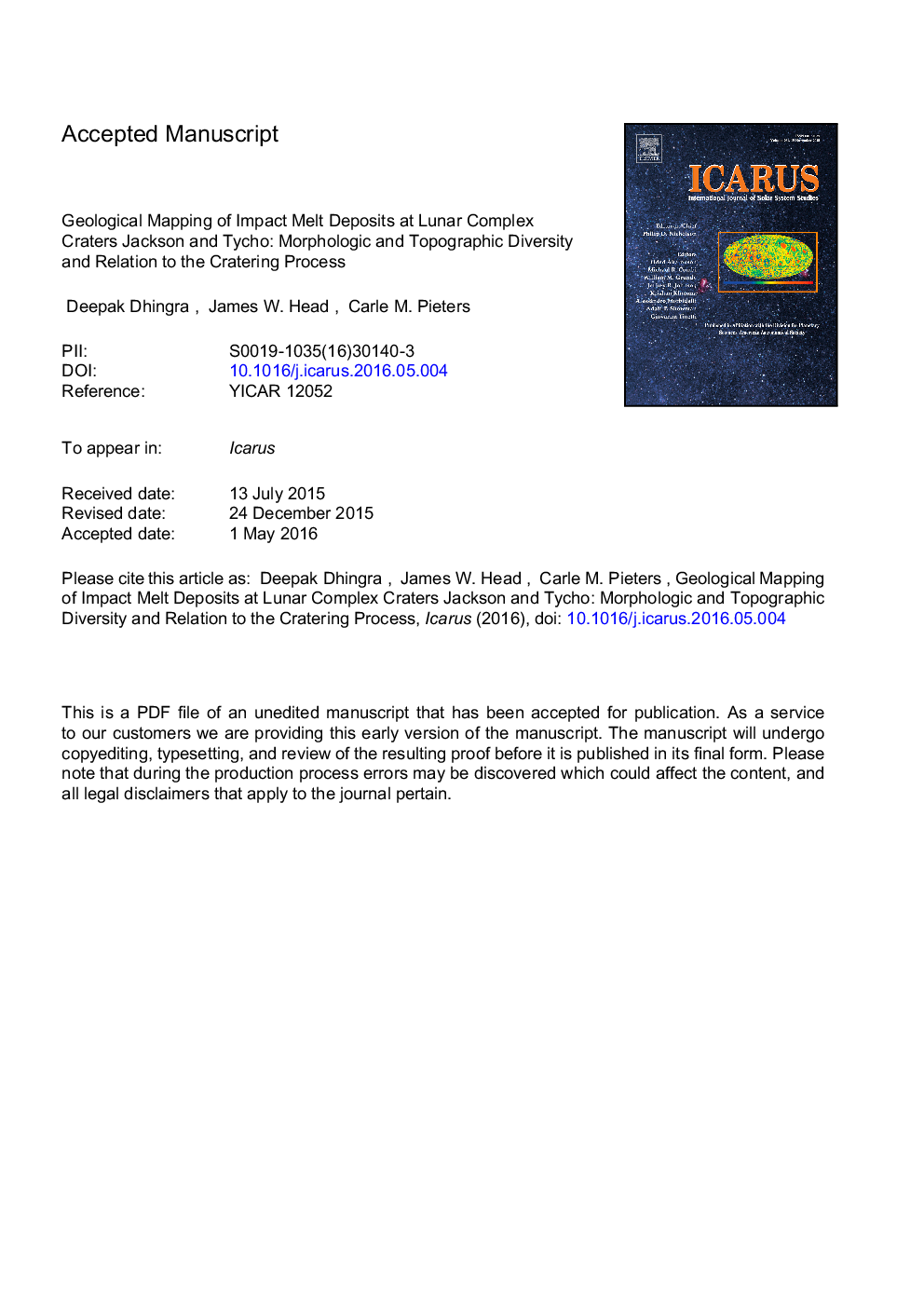| Article ID | Journal | Published Year | Pages | File Type |
|---|---|---|---|---|
| 5487266 | Icarus | 2017 | 52 Pages |
Abstract
High resolution geological mapping, aided by imagery and elevation data from the lunar reconnaissance orbiter (LRO) and Kaguya missions, has revealed the scientifically rich character of impact melt deposits at two young complex craters: Jackson (71Â km) and Tycho (85Â km). The morphology and distribution of mapped impact melt units provide several insights into the cratering process. We report elevation differences (>200Â m) among large, coherent floor sections within a single crater and interpret them to be caused by crater wall collapse and/or large scale structural failure of the floor region. Clast-poor, smooth melt deposits are correlated with floor sections at lower elevations and likely represent ponded deposits sourced from higher elevation regions (viz. crater walls). In addition, these deposits are also located in the inferred downrange direction of the impact. Melt-coated large blocks spanning several kilometers are common on the crater floors and may represent collapsed wall sections or in some cases, subdued sections of the central peaks. Spatial trends in the mapped impact melt units at the two craters provide clues to decipher the conditions during each impact event and subsequent evolution of the crater floor.
Related Topics
Physical Sciences and Engineering
Earth and Planetary Sciences
Space and Planetary Science
Authors
Deepak Dhingra, James W. Head, Carle M. Pieters,
